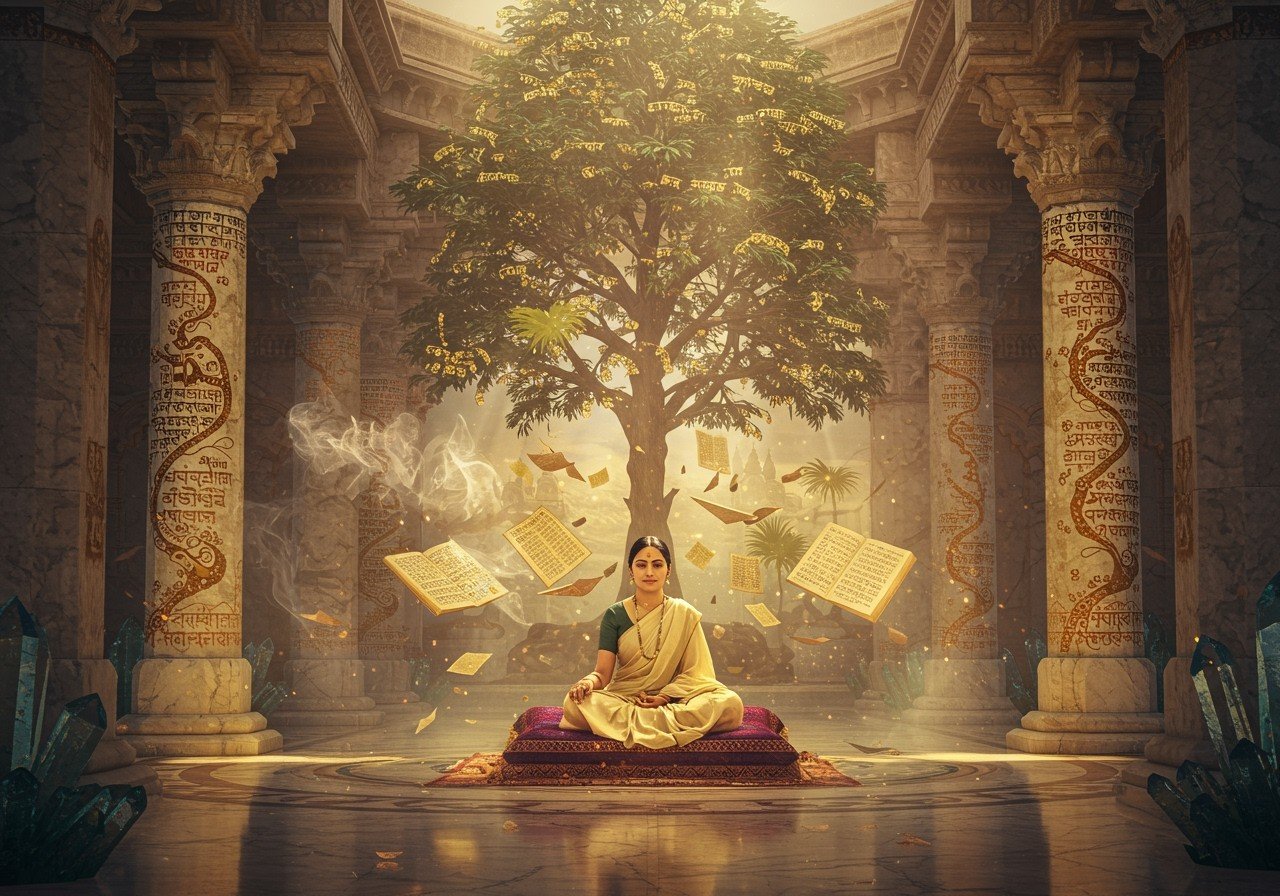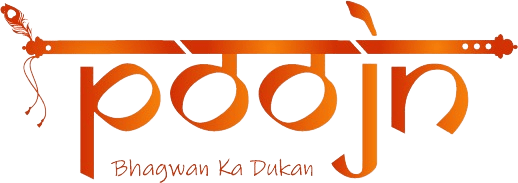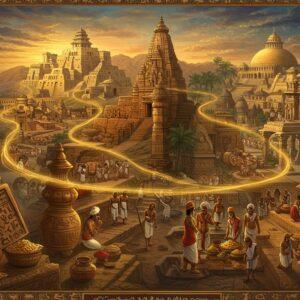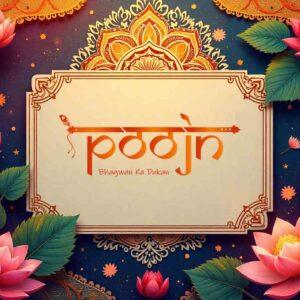
Ancient India, a cradle of diverse cultures and traditions, gifted the world a treasure trove of languages. This article delves into the heart of India’s classical languages, focusing on the profound influence of Sanskrit. Understanding these languages unlocks a deeper appreciation for ancient India’s rich heritage and intellectual achievements.
Classical Languages of India
India recognizes six languages as classical: Sanskrit, Tamil, Telugu, Kannada, Malayalam, and Odia. Their classical status stems from their antiquity and the wealth of literary traditions they embody.
Criteria for Classical Status
The Indian government designates a language as classical based on specific criteria:
- Antiquity: A language must have verifiable ancient origins, possessing a history that stretches back centuries, demonstrating its enduring presence and influence.
- Rich Literature: A substantial body of ancient literary works is essential, showcasing the language’s depth, versatility, and cultural significance across various genres and periods.
- Original Literary Tradition: The language should boast a unique literary history, distinct from other languages, highlighting its independent evolution and contribution to the world’s literary landscape.
Unique Contributions
Each classical language possesses unique literary contributions and historical contexts. These languages not only shape regional identities and cultural practices but also play a vital role in religious and philosophical texts. They continue to influence modern Indian languages and dialects, demonstrating their enduring legacy.
Sanskrit: The Sacred Language
Often hailed as the most ancient and revered of India’s classical languages, Sanskrit holds a special place in India’s cultural and spiritual landscape.
Origins and Significance
Sanskrit belongs to the Indo-European language family. Vedic Sanskrit, the language of the Vedas (composed around 1500 BCE), forms the foundation of Hindu scriptures and rituals.
Key Literary Works
Classical Sanskrit literature boasts timeless masterpieces:
- Mahabharata: An epic narrative of immense scale, exploring themes of dharma, war, and human destiny.
- Ramayana: A beloved epic poem recounting the life and adventures of Lord Rama, embodying ideals of virtue and righteousness.
- Works of Kalidasa: This renowned poet and playwright’s works, including Abhijnanashakuntalam and Meghaduta, are celebrated for their poetic beauty and dramatic depth.
Influence on Sciences
Sanskrit’s influence extended to ancient Indian sciences like mathematics, astronomy, and medicine. Its continued use in rituals and ceremonies underscores its relevance in contemporary Hindu practices. For those seeking to deepen their connection with Sanskrit, Poojn.in offers a wide selection of resources, including sacred texts, prayer books, and ritual items. Explore our collection at www.poojn.in and discover the richness of this ancient language.
Tamil: The Timeless Language
As one of the oldest living languages, Tamil boasts a continuous literary tradition spanning over 2000 years. Its enduring presence speaks volumes about its cultural significance.
Early History
Belonging to the Dravidian language family, Tamil’s early history is illuminated by Sangam literature, providing insights into ancient Tamil culture and society.
Significance in Kingdoms
Tamil played a pivotal role in prominent South Indian kingdoms, including the Chola and Pandya dynasties, shaping their administrative and cultural landscapes.
Key Literary Works
Tamil literature boasts significant works:
- Tirukkural: A timeless collection of couplets offering wisdom on various aspects of life, from ethics to love and governance.
- Contributions by Thiruvalluvar: This celebrated poet and philosopher’s works continue to inspire and guide generations with their profound insights into human nature and morality.
Modern Status
Tamil’s presence in Hindu and Jain texts highlights its religious significance. Its global diaspora actively works to preserve and promote the language, ensuring its continued vibrancy.
Telugu and Kannada: The Dravidian Kinship
Telugu and Kannada, two prominent Dravidian languages, share a rich classical heritage, contributing significantly to India’s linguistic diversity.
Historical Development
Early inscriptions, dating back to the 6th century, trace the development of Telugu and Kannada. The Satavahana dynasty championed Telugu, while the Kadamba dynasty nurtured Kannada. Both languages flourished under various South Indian kingdoms, enriching their literary and cultural landscapes.
Key Literary Figures
Notable authors shaped Telugu and Kannada literature:
- Nannaya, Tikkana (Telugu): These literary giants contributed significantly to the Telugu Mahabharata, shaping the course of Telugu literature.
- Pampa (Kannada): A pioneering figure in Kannada literature, Pampa’s epic poetry laid the foundation for future generations of Kannada writers.
Contemporary Status
Today, Telugu and Kannada remain vibrant languages, used in daily communication, media, and education. Ongoing efforts to preserve and promote these languages include literary festivals, academic research, and digital archives.
Malayalam and Odia: Literary Gems
Malayalam and Odia, recognized for their rich literary heritage, add to the mosaic of India’s classical languages.
Evolution of Malayalam
Evolving from Tamil during the medieval period, Malayalam developed its own script and distinct literary tradition, known for its evocative poetry and prose.
Historical Significance of Odia
Odia’s history traces back to ancient Kalinga. Early inscriptions highlight its use in administration and literature, with the Jagannatha cult in Puri significantly influencing Odia culture.
Regional Identity and Practices
Both Malayalam and Odia are integral to the cultural identities of their respective regions. Their use in religious texts, folk traditions, and regional festivals underscores their significance in shaping social practices.
The Cultural Impact of Classical Languages
India’s classical languages have profoundly impacted the nation’s culture, arts, and intellectual traditions.
Influence on Music and Dance
Classical languages have shaped Indian classical music and dance. Carnatic music often incorporates compositions in Sanskrit, Tamil, Telugu, and Kannada, enriching performances with spiritual depth.
Shaping Philosophy and Religion
These languages played a crucial role in the development of Indian philosophy and theology. Key religious texts in Hinduism, Buddhism, Jainism, and Sikhism were composed in classical languages, influencing religious practices across India. Poojn.in offers a curated collection of puja essentials, including incense sticks (https://www.poojn.in/product/8473/falcon-brand-indian-sandal-incense-sticks), sindoor (https://www.poojn.in/product/8529/traditional-keya-kouto-sindur-dibbi-sindoor-kouto-hand-made-wooden-sindoor-container), and Laddu Gopal murtis (https://www.poojn.in/product/9368/laddoo-gopal-4-no-4-astadhatu-brass-laddu-gopal-murti-laddu-gopal-pure-pital-brass-laddoo-gopal-to-worship-copy), to enhance your spiritual practices.
Preservation Efforts
Preserving this rich heritage involves digitizing manuscripts and promoting classical studies. Educational institutions are incorporating these languages into their curricula to ensure future generations appreciate their significance.
Promoting Unity in Diversity
India’s linguistic diversity is a source of strength. The shared heritage of classical languages fosters unity amidst this diversity. Learning about these languages connects us to our past and celebrates our rich cultural tapestry.
Understanding India’s classical languages offers a glimpse into a world of intellectual and cultural richness that continues to inspire and influence contemporary society. Explore the spiritual significance of Sanskrit mantras further in our dedicated blog post: https://www.poojn.in/post/17136/sanskrit-mantras-a-spiritual-language-guide.


